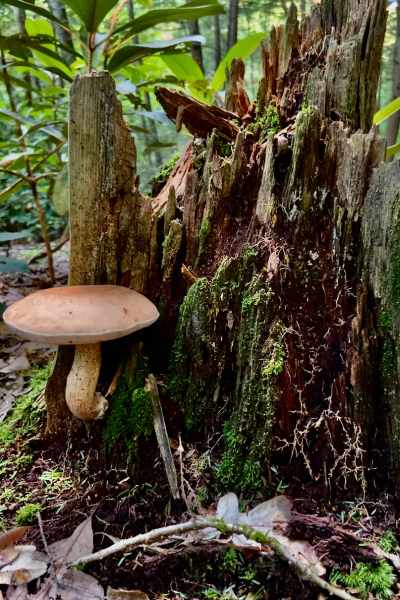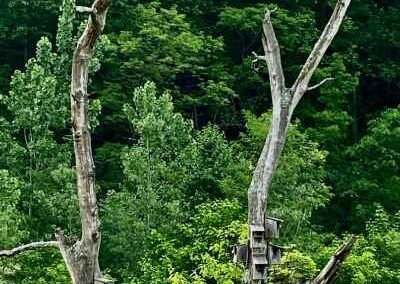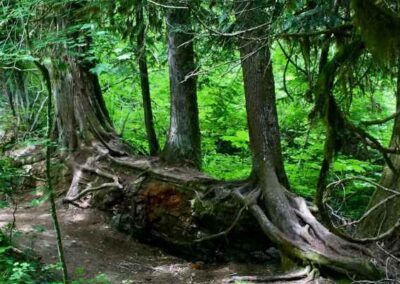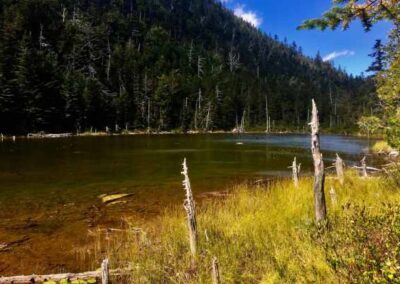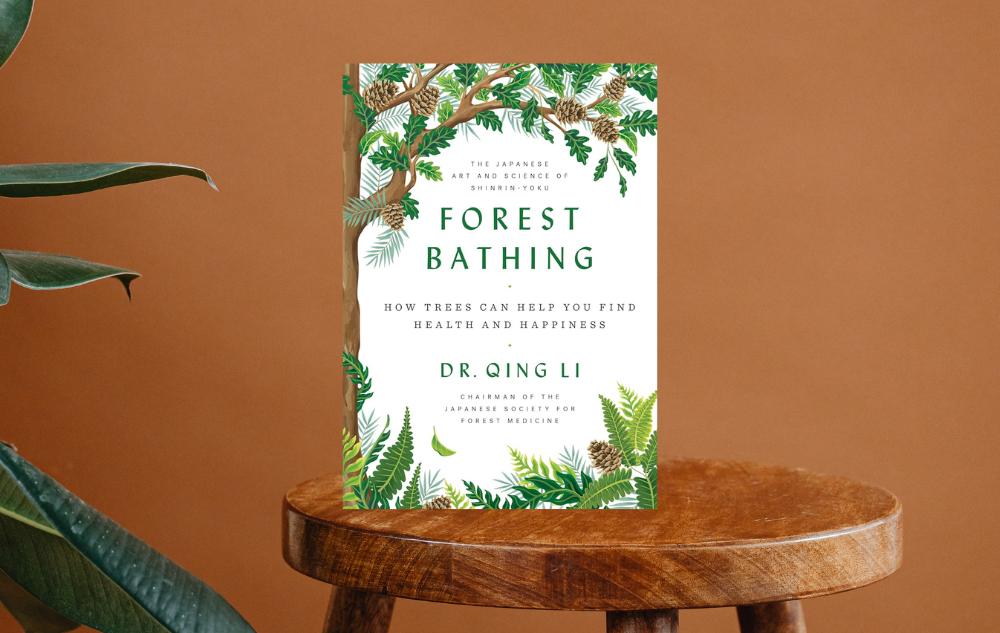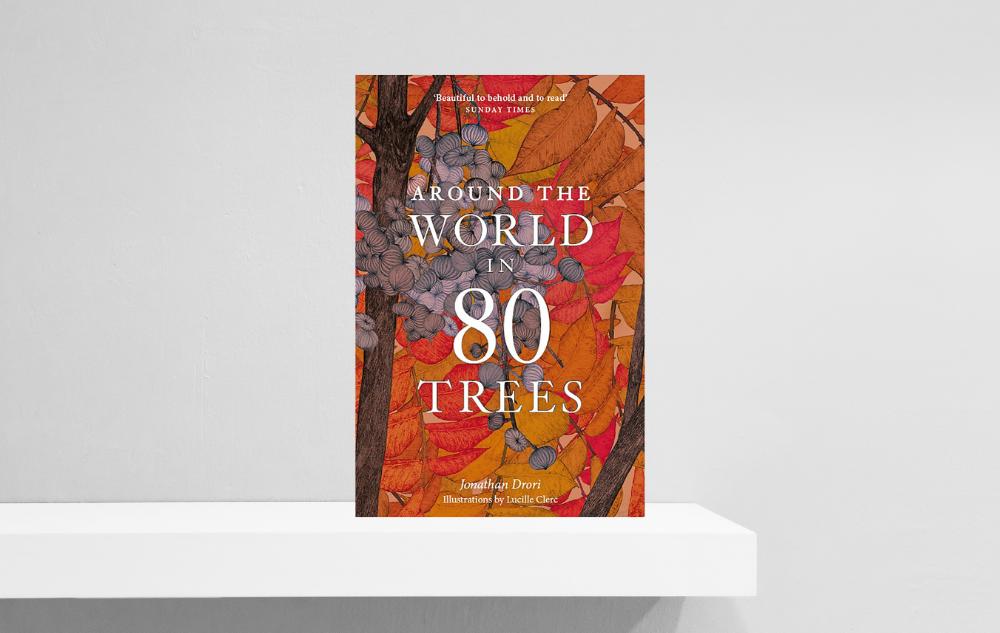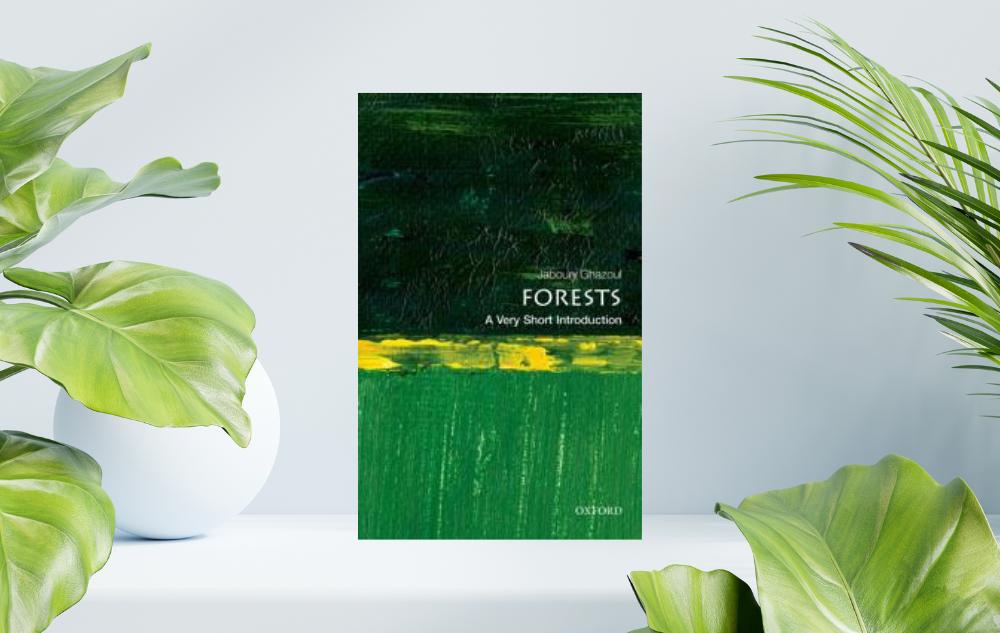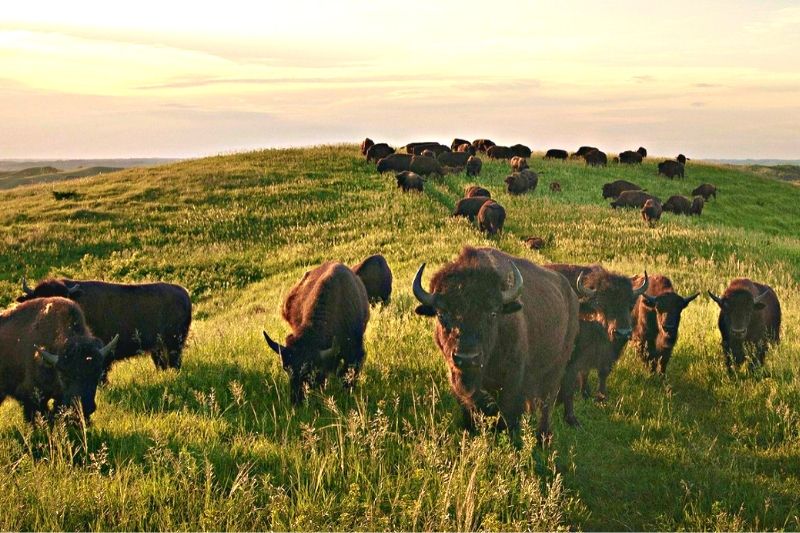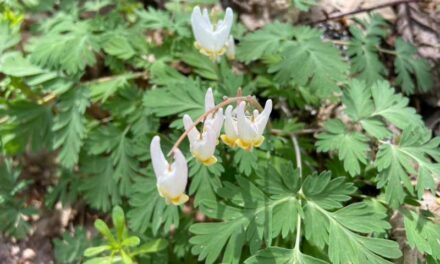Forest snags are an essential part of our ecosystem. These wildlife trees make up 10-20% of the trees in the understory, the layer beneath the canopy in our forests.
Have you ever walked through a forest and observed the coarse, decomposing standing broken trees and their fallen woody brethren on the ground? I once thought of these decaying trees as debris, like a stack of natural Jenga blocks scattered and abandoned throughout the forest by an oversized child. While funny to think about, these trees were felled by natural disturbances like high winds, microbursts, tornadoes, hurricanes, wildfires, ice storms, and disease. These weather events are a natural part of the forest life cycle, and create forest snags.
Look closer at the decomposing standing trees being strangled by vines. Observe the fallen logs that commingle with leaf and needle litter, twigs, pine cones, tree nuts, boulders, and rocks. So much beauty, surrounded by so much decay and death – or is it? Snags play a large role in the health of wooded ecosystems.
Snags play an important role in supporting life in the forest.
Snags resemble large jagged toothpicks that have been twisted or broken off, leaving sturdy standing stumps behind. They can remain in place for 2-10 years and sometimes longer, depending on the region in which they reside. Snags and downed decaying trees add structural diversity to our woodlands by nurturing life through nutrient-enriched decayed soil called humus. Lichen, moss, varieties of mushrooms, and mycelium, a fungus-like colony, branch out underground like a road map in all directions. Snags retain a lot of water, and the decomposing trees support plant growth by adding vital nutrients to the soil through the nitrogen cycle.
In the forest’s understory, many beautiful varieties of ferns, wildflowers, shrubs, and tree seedlings grow close by.
Snags provide an essential food source and habitats for organisms, insects, amphibians, and reptiles. Cavities drilled by woodpeckers in snags create habitations for other birds, owls, and mammals such as mice, chipmunks, squirrels, and deer.
If a snag topples over and continues to decay near a water source, the root system can help to hold soil in place. In this way, snags prevent or lessen soil erosion and stabilize the banks of the water source. Decomposing snags in the water provide new life, habitats, protection, and food, such as algae and bacteria for aquatic animals, macro-invertebrates, and fish. According to the National Wildlife Federation, “Dead trees provide vital habitat for more than 1,000 species of wildlife nationwide.”
Moss-covered fallen snags
Fallen snags on the ground are covered with a host of moss, plants, and fungi. Dead limbs and trees are a natural and desirable part of the wildlife habitat.
Wetland Snags
Wetland snags supporting bird life. On the first snag on the left at the very top there is a beautiful tree swallow songbird.
Fallen Snag
A fallen snag in the Lowland Forest, an old growth forest in Mount Rainer provides nutrients and life to 3 trees, moss, ferns, fungi as well as shelter to a host of insects, birds, and small mammals.
Oh, the stories trees can tell us if we only look and listen.
In many of the old-growth forests that I have been fortunate to have hiked through, I have found myself deep in thought, wondering about the variety of trees I beheld. I often estimate their age and imagine what the trees have experienced and seen in their lifetime. While I walk, I ponder the relevance of trees in our lives now in this ever-changing climate. I imagine who may have camped or sat against these large trees, the historical events they might have lived through, the romances that they witnessed, and how they came to be here. Is their existence thanks to man, an animal, or a bird? Or did a seed fall, reemerging as a seedling in the spring? There’s so much to marvel at when walking through the forest.
I no longer see snags as old dead, decaying trees but wonder at all the life they support. Peter Wohlleben writes in The Hidden Life of Trees, “But we shouldn’t be concerned about trees purely for material reasons; we should care about them because of the little puzzles and wonders they present us with.”
Discover more about trees with one of our Recommended Reads:

Written by Yvonne Dwyer
Master Naturalist and OPL Content Contributor
“It is truly an honor for me to be a contributor to One Planet Life. By sharing my experiences and lifetime of learning, I hope to inspire conservation, sustainability, stewardship, and awareness of enjoying the natural wonders of the world for the wellbeing of people and the planet.”


